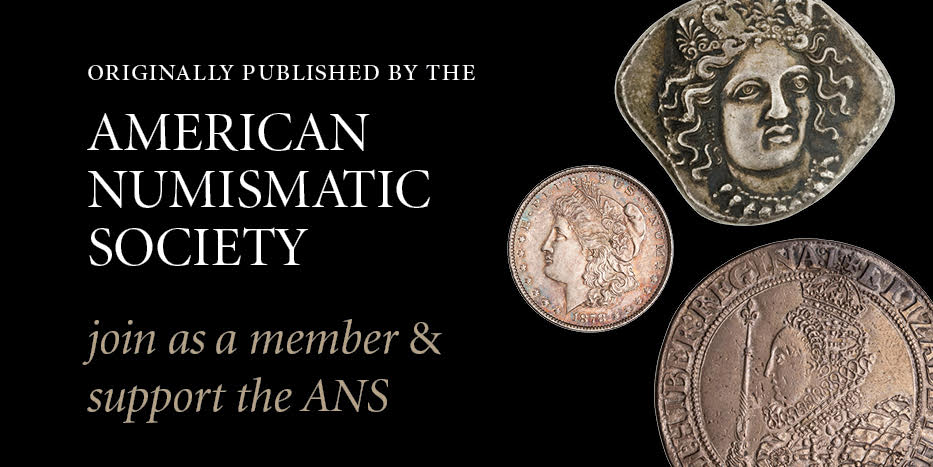By Jared Goldfarb, ANS Assistant Librarian, for American Numismatic Society (ANS) ……
While walking around the streets of New York City, I find myself constantly scouring the ground for lost change in order to buy my favorite budget lunch, dollar pizza! I rarely find much, but it slowly adds up. When I visited Indonesia for the first time in 2022, I attempted to continue my habit of picking money off the ground. I immediately stopped after being met with the horrified look on my girlfriend’s face. Seeing that I had no idea what the problem was, she explained to me that in Indonesia, the money on the ground could be cursed! She further explained that it is common practice in her country for people to place curses on currency, whereby their misfortunes will be transferred to the person who picks up the money. I was fascinated by the idea of money serving magical purposes in Indonesian culture, and I planned to research the topic further upon returning home.

Figure 1. Indonesian large-denomination rupiah paper currency. Source: Public domain.
Regarding the idea that money is used as a medium for transferring curses and misfortune, I found very little information aside from that the custom stems from local superstitions and folklore. For example, I found several popular news articles with roughly translated titles such as, “Recognize Basangan Money that is Deliberately Spread to Seek Sacrifices,” “Mr. Romdoni: Don’t Take It (Kenali Uang Basangan yang Sengaja Ditebar untuk Mencari Tumbal, Abah Romdoni: Jangan Diambil),” and “Beware, This is how to Distinguish Real Money and Cursed Money on the Road. You take, you die! (Waspada, Ini Cara Membedakan Uang Asli Dan Uang Tumbal Pesugihan Di Jalan. Salah Ambil Bisa Mati!).” These articles explain that by picking up random money from the street, especially “large” sums (Fig. 1), you could become a victim of some wicked person’s pesugihan ritual. Pesugihan is generally seen as a complicated, evil magic ritual whereby the practitioner will call upon the aid of a medium who can rally the aid of spirits. Unfortunately, for the ritual to work it requires a sacrificial victim, and this is where the money comes in. The money serves as bait, and upon taking the money, the person becomes the practitioner’s sacrifice. This is believed to result in horrible misfortune and ultimately death for the victim.
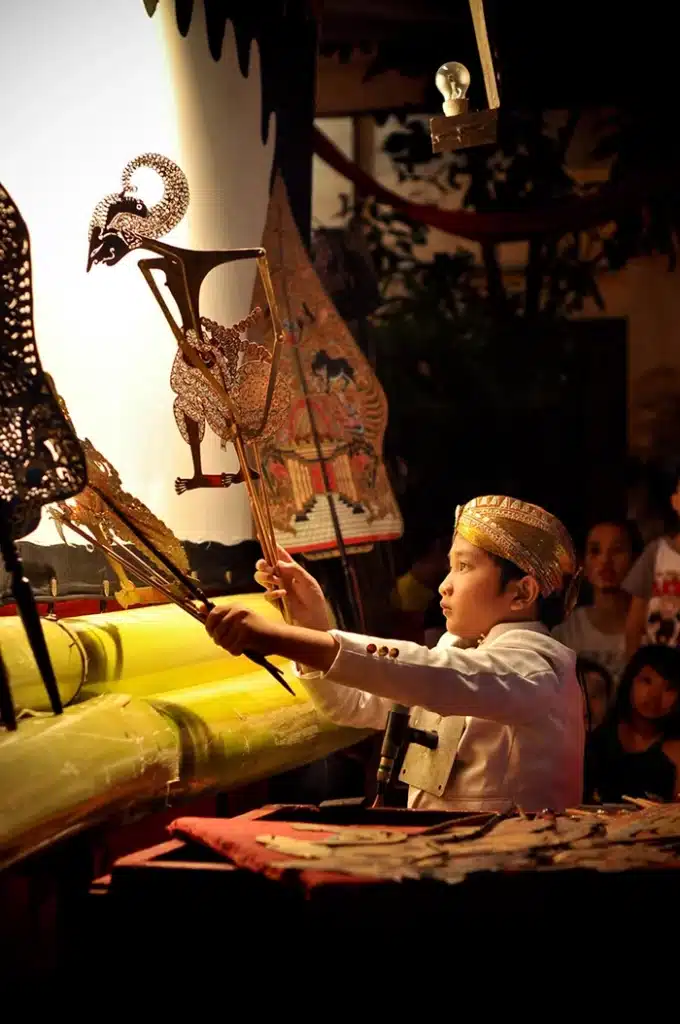
Scary folklore aside, I did find information on a real, historical tradition of magic money on Java dating to the Majapahit period (13th-16th centuries). The earliest mentions what are now referred to as magic coins appeared in Thomas Stamford Raffles’ 1817 work, The History of Java (vol. 1, p. 376), where they were described as bearing traditional Javanese wayang shadow puppet characters (Fig. 2). Raffles’ contemporary, William Marsden, added that they appeared to be Chinese in nature (Cribb, 22). That being said, their non-monetary functions were not clear to Raffles and Marsden at the time (Cribb, 69). More recently, the task of explaining Indonesia’s magic coins (Fig. 3) was undertaken by Joe Cribb in his 1999 publication, Magic Coins of Java, Bali, and the Malay Peninsula: Thirteenth to Twentieth Centuries.
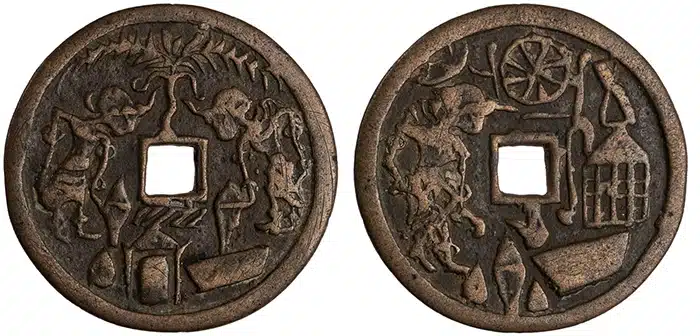
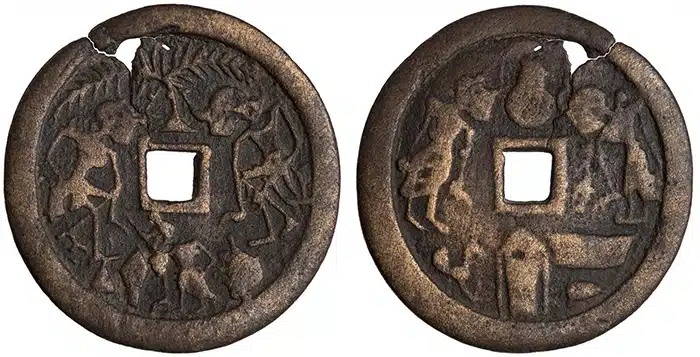
(top) ANS 1911.105.497. (bottom) ANS 1916.69.35. Photos: Alan Roche, ANS.
According to Cribb, the earliest magic coins in Indonesia most likely date to the 13th century (early Majapahit period) and would have been made from the recast metal of Chinese cash coins that had become abundant in the region by then (Cribb, 54). Following the arrival of Europeans in the region in the 17th century, Spanish and British coins became additional bases for magic coins, which were still being made well into the 1990s when Cribb completed his book (Cribb, 53) (Fig. 4).

While there is no written evidence describing the function of the early coins, 19th-century accounts explain that contemporary users of the coins believed that they had magical properties and treated them like amulets or talismans. A 20th-century account even describes them as being used in an exorcism to drive evil spirits out of a sick man (Cribb, 67). Cribb recounts the tale of Anker Rentse, a student of Malay magical practices in the early 20th century, who claims to have personally witnessed a magical coin in action at an exorcism. Rentse wrote:
The puppets are replaced by the Pitis Jawa (magic coin), which represents the same ancient deities as the puppets of the Javanses Shadowplay. During the performance, the medicine man holds the amulet in a string… He sits upright in front of the burning incense, holds out his arm so that the amulet is covered in the sacred smoke down through which the divine powers are supposed to descend… I had the opportunity to witness such a performance some years ago. A member of the Raja’s household was possessed by a hantu [spirit] and had to be cured … After some lengthy invocations by the medicine man the Pitis Jawa suddenly commenced moving (Cribb 66-67, Rentse).
Rentse continues, skeptically describing a scene of chanting and screaming that one might expect to find in a modern horror film, though ending with the successful excisement of the spirit.
The iconography on the ancient coins, which commonly depict the Javanese hero Panji in a wayang style, suggests that their original function may also have been related to exorcising evil spirits. Cribb points out that many of the depictions of Panji on the coins place him alongside his spouse, Candra Kirana, at their wedding. This scene may have been chosen for two reasons. The first is that Panji and Candra Kirana represent powerful ancestral spirits, which are believed to be capable of guarding individuals and their communities. The second is that the wedding of Panji and Candra Kirana represents the sacred moment when they agreed to be married, the first step in creating progeny and becoming future ancestors (Cribb 78). The wayang style is important as well since the wayang puppets are believed to have power from the deities they depict. In fact, Clifford Geertz wrote in his 1960 publication The Religion of Java that wayang performances primarily served a religious function to drive away evil spirits and bestow good fortune. The plays could even be performed with no audience because their true purpose was not to entertain (Geertz, 269). Thus, the wayang depicted on the coins could stand in for the real shadow puppets and give the coins their magical efficacy (Cribb, 66, Rentse).
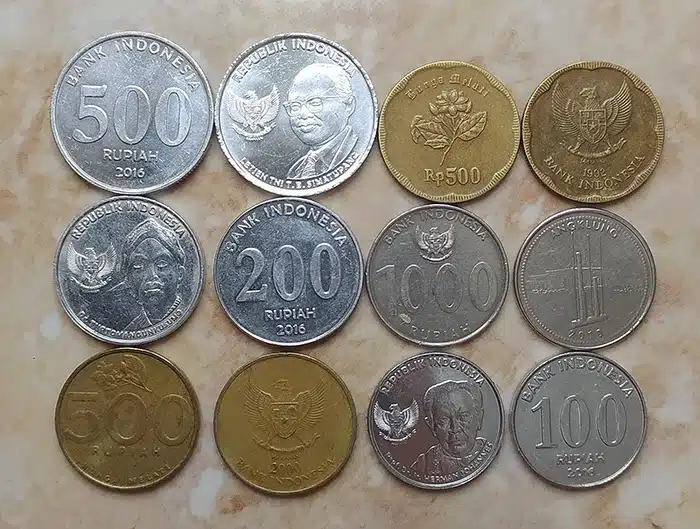
Despite the 19th- and 20th-century eyewitness accounts of the coins being used as talismans to ward off evil spirits, as well as the Panji iconography on the ancient coins, scholars can only speculate the original function of the early coins. Regardless of their original purpose, it is clear that they developed amulet-like characteristics and that the tradition of magic money remains alive in Java to this day. If you ever find yourself bending down to pick up money in Indonesia, think twice, or suffer the supernatural consequences (Fig. 5).
* * *
